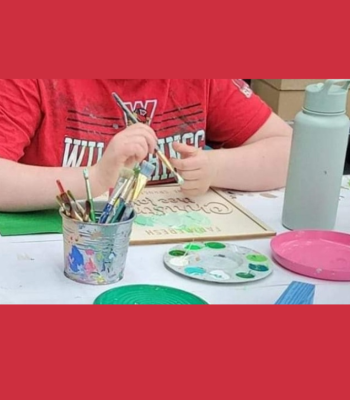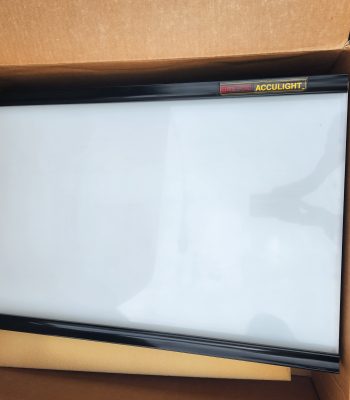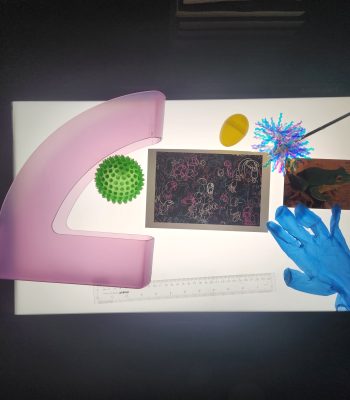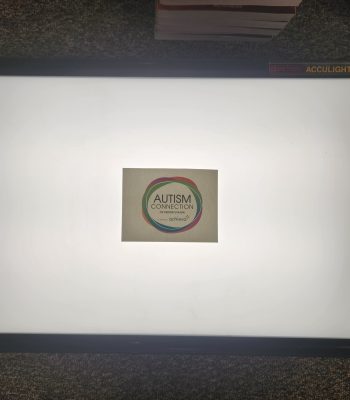In this uplifting interview with Amy Hart, the driving force behind Sophie’s Potluck, we delve into the story of Sophie, a vibrant 14-year-old on the autism spectrum. Amy shares the inspiration behind starting Sophie’s Potluck and the unique experiences they offer to the community. From the adorable blue peacock logo to the diverse array of activities, this initiative aims to create a supportive and inclusive space for families. Discover how Sophie’s Potluck is fostering connections and providing opportunities for growth.
Tell us a little about Sophie.
My daughter Sophie is 14 years old and an 8th grader in the Pittsburgh Area. Sophie is on the autism spectrum and and can’t always communicate her needs.

Sophie’s signature bow
What drove you to start Sophie’s Potluck?
During the winter, I was looking for new activities that I could do with our friends. We typically paint monthly at Splat: A Make and Take Art Studio in the Pittsburgh Area, Pennsylvania. Everyone really enjoys themselves each time and my friend, John Novogurski, (who created and runs the Sophie’s Potluck webpage) and I thought it would be fun to do something more frequently. So we came up with the idea to run the website so we can notify people of our events, and let people register online.

Getting creative
I am always looking for new opportunities for Sophie to try and then ask friends to join us. Then I started thinking of ways that we could really start to explore some venues that we wouldn’t typically think of going to. With a little brainstorming and lots of support, I began emailing different places all over the city. We hope to grow from here.

Sophie’s Potluck logo designed by April Watt Little and Cheri Foote
Your logo is an adorable blue peacock cuddled next to a cooking pot. What’s the story behind this image?
I always have a bow in Sophie’s hair to keep track of her, and she loves peacocks. It started as a little inside joke, but John came up with the name because when you host a potluck, everyone brings something to eat. So with Sophie’s Potluck, we wanted everyone to bring their best! My friends April Watt Little and Cheri Foote collaboratively took the name and created the logo for us.
What kind of activities do you offer?
We work with all kinds of venues to bring a wide array of experiences to our special needs friends. Our first “official” event was a 45 minute zoo encounter, where the educators there taught us about arctic animals, and brought a few animals (some arctic, some not) out for us to see. It was a wonderful experience for our friends! Our upcoming events include a trip to a farm, we’re building our own terrariums, and creating our own bath bombs! Many other events are in the works.

Sophie’s Potluck Zoo Encounter
Are there opportunities to volunteer?
Yes! With some events, we are limited to the number of people that are able to participate. However, when we have the space, we LOVE to have volunteers come and join us.
Are there opportunities to host events?
Any ideas or advice for parents and caregivers with autistic loved ones?
I think that we as parents and care givers are a village that need to learn from each other. I have also found that we just need to ask and many people are interested in helping us, as a group, gain new experiences and learn about the world around them.
Sophie’s Potluck not only serves as a platform for unique and enjoyable experiences, it also stands as a testament to the strength of community and collaboration. Amy’s journey is fueled by a desire to explore new possibilities for her daughter and others. As the initiative continues to grow, offering a range of activities and welcoming volunteers and event hosts, it becomes a shining example of the power of collective support. For parents and caregivers on the autism spectrum, Sophie’s Potluck offers not just events but a village of shared experiences, proving that together, we can enrich the lives of our loved ones and learn from one another.










